The Equitable Building Burns To The Ground – January 9, 1912
On January 9, 1912, the Equitable Life Assurance Building at 120 Broadway was destroyed in a fire of historic proportions.
In 2012 we covered the 100th anniversary of this historic fire and its consequences.
Soon after the fire postcard companies were selling images of the fire. Here are a few of them.
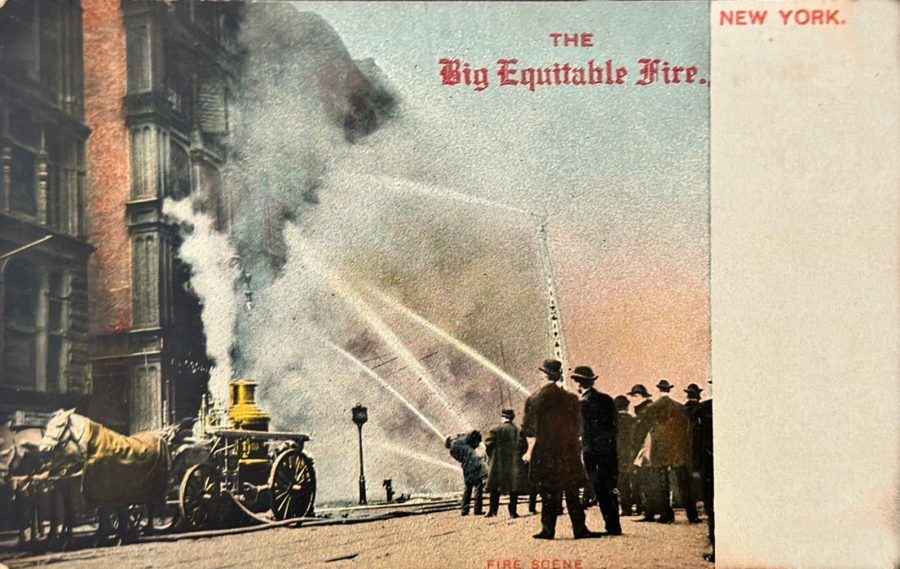 The firemen tried their best. But nothing could stop this inferno.
The firemen tried their best. But nothing could stop this inferno.
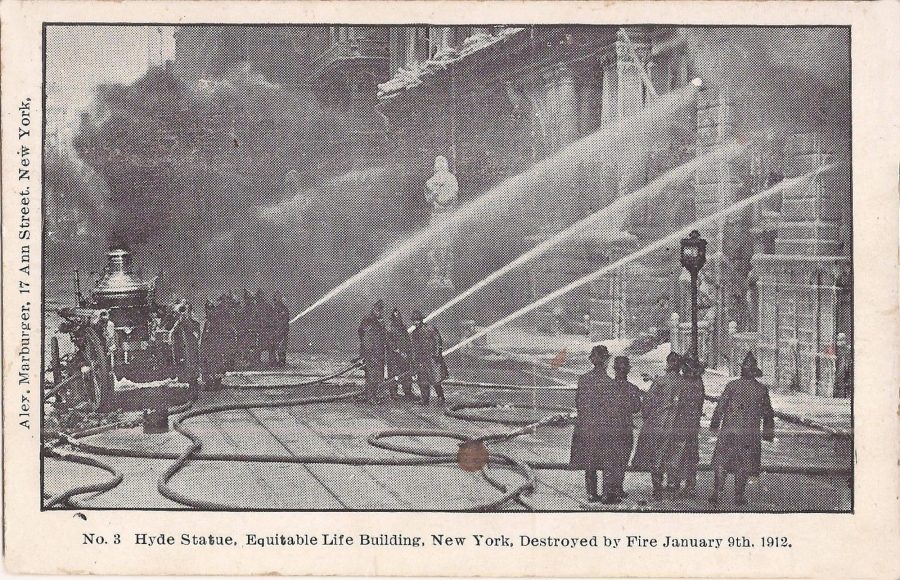 Temperatures in the single digits made battling the blaze incredibly difficult.
Temperatures in the single digits made battling the blaze incredibly difficult.
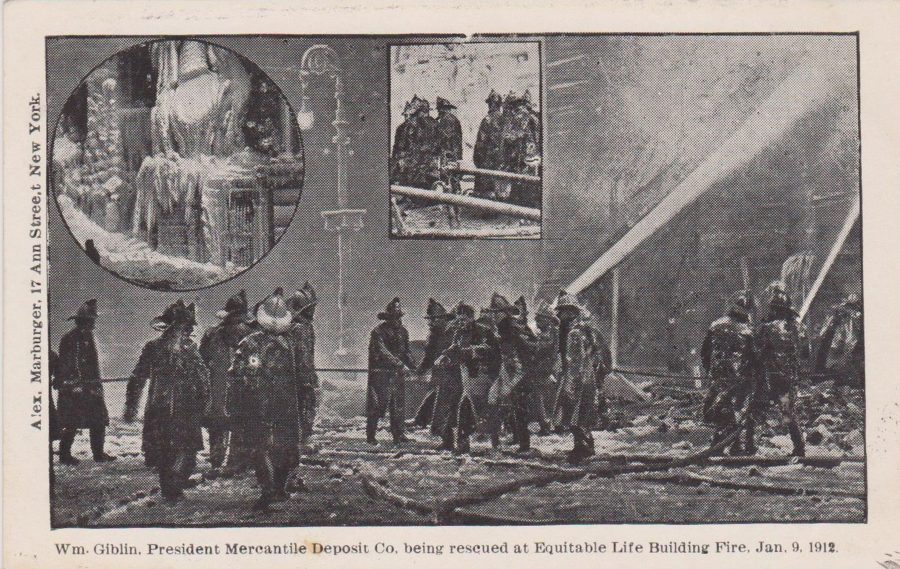 A Rescue
A Rescue
This postcard shows the rescue of William Giblin.
William Giblin, was the president of the Mercantile Safe Deposit Company located in the Equitable Building.
Giblin entered the building after the fire had started to retrieve important papers, over the objections of police. Giblin went through a side entrance on Cedar Street with a heavy steel door at the entrance which was locked with a spring lock. Accompanied by a watchman named William Sheehan, Giblin unlocked this door and forgot to take the key out of the keyhole. With the building in flames Giblin groped his way to the basement and made his way to a vault and eventually retrieved the papers.
No trying to escape, Giblin attempted to retrace his steps but the smoke was too thick and Giblin slammed the vault door shut. He was trapped. Going to a window with steel bars Giblin waved a handkerchief. Time was running out.
Along with Giblin and Sheehan, 60-year-old watchman William Campion was trapped inside the vault as well and he died. After a while, a reporter saw the waving handkerchief and reported it to the Rev. Father McGean, a chaplain of the fire department.
Click here to read the dramatic story of how fireman James Dunn rescued Giblin and Sheehan.
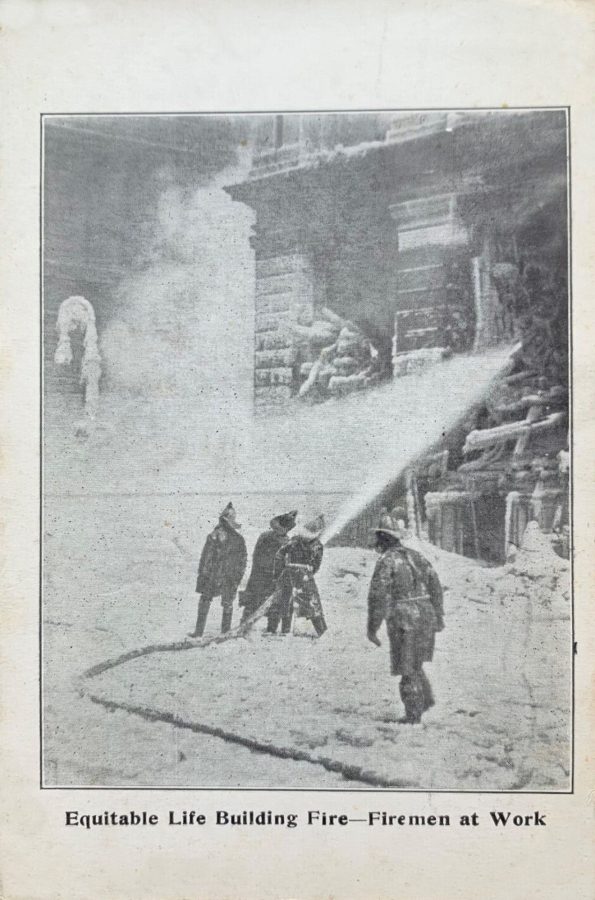 Ice formed quickly – everywhere.
Ice formed quickly – everywhere.
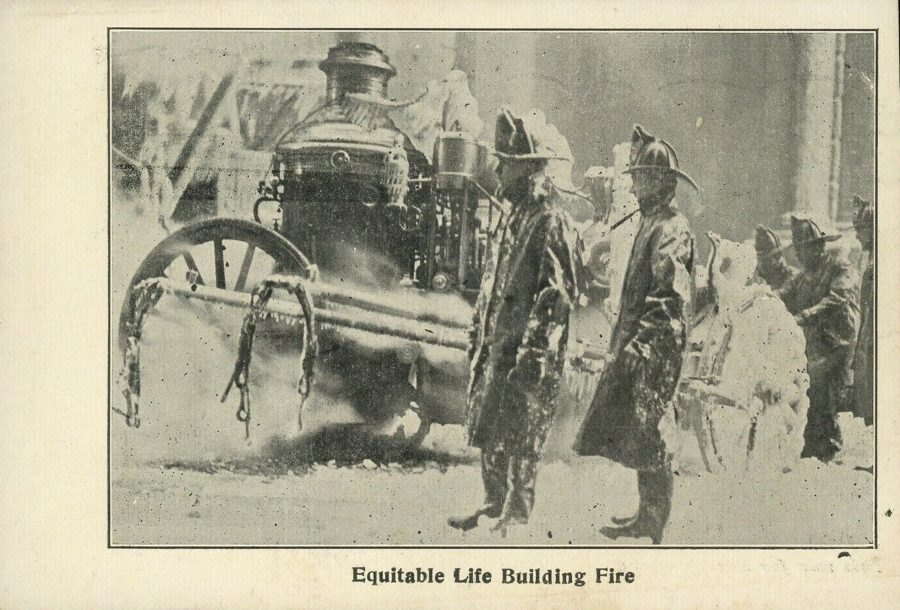 Conditions were brutal, hampering the firemen.
Conditions were brutal, hampering the firemen.
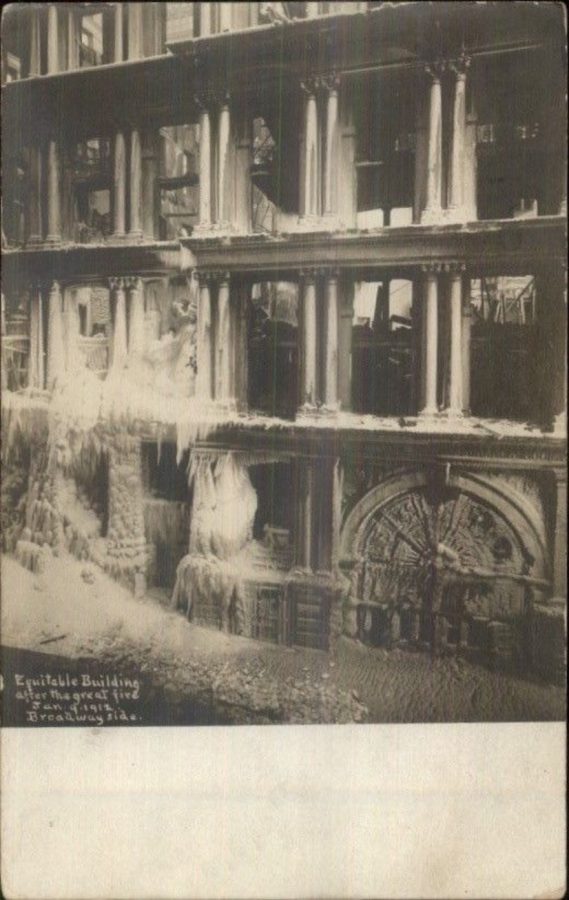 Broadway side of Equitable Building.
Broadway side of Equitable Building.
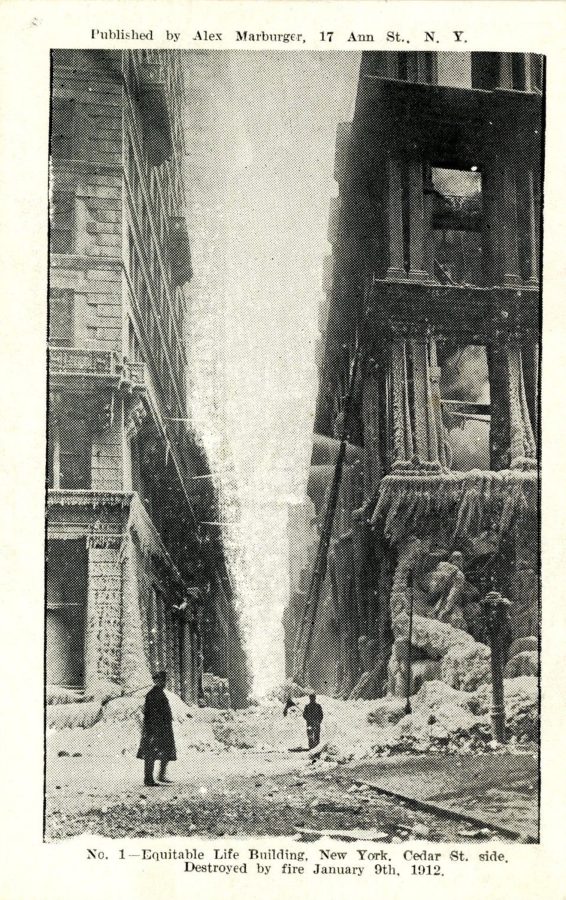 Cedar Street side of Equitable Building after fire.
Cedar Street side of Equitable Building after fire.
 The ruins of the Equitable were turned into a veritable ice palace.
The ruins of the Equitable were turned into a veritable ice palace.
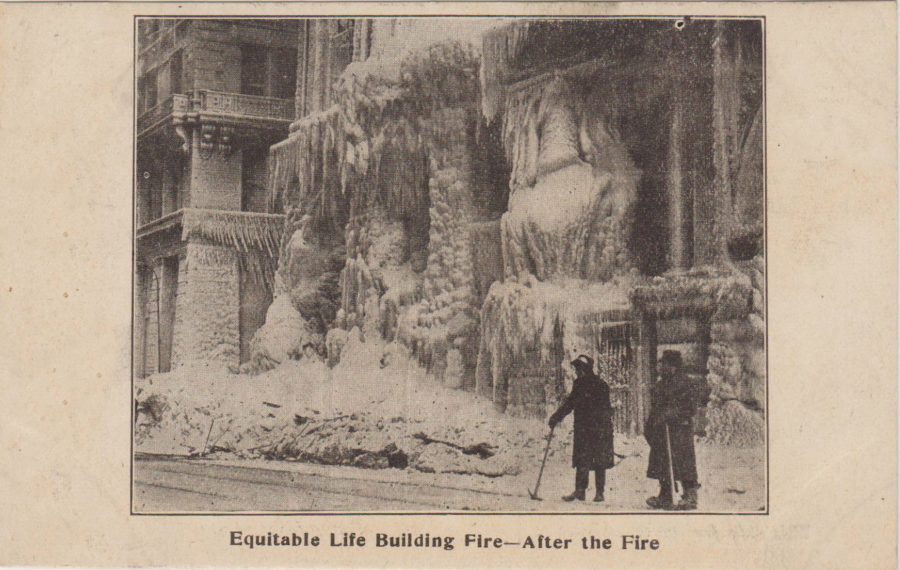 The aftermath had people coming to see for themselves the devastating results of the fire.
The aftermath had people coming to see for themselves the devastating results of the fire.
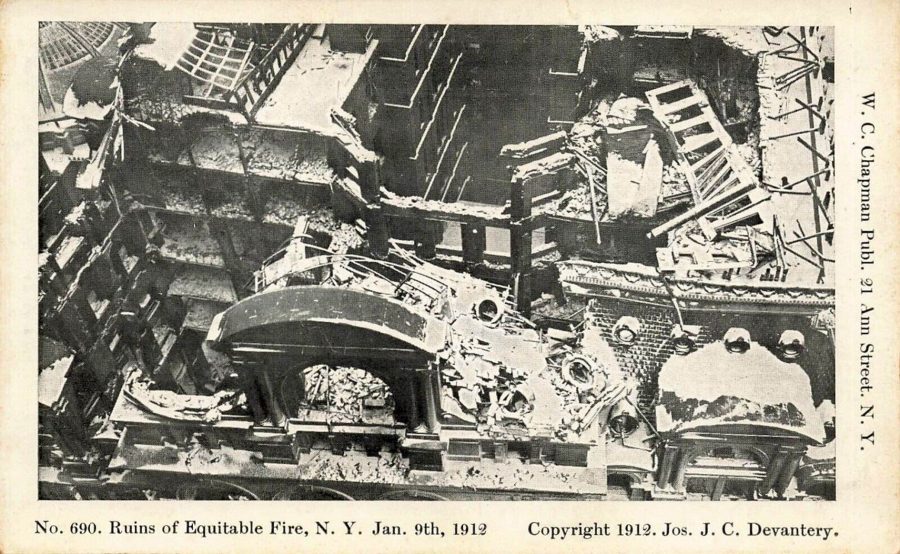 It was only from a high vantage point that one could see the scope of destruction and a building completely gutted by fire.
It was only from a high vantage point that one could see the scope of destruction and a building completely gutted by fire.
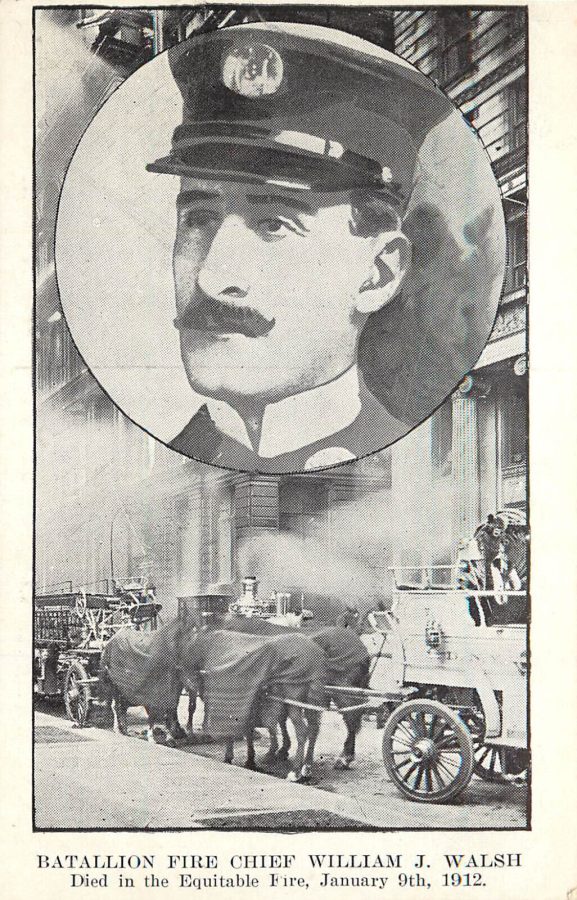 The human toll was six people were killed including one of New York’s bravest, Battalion Chief William J. Walsh died in the line of duty.
The human toll was six people were killed including one of New York’s bravest, Battalion Chief William J. Walsh died in the line of duty.




